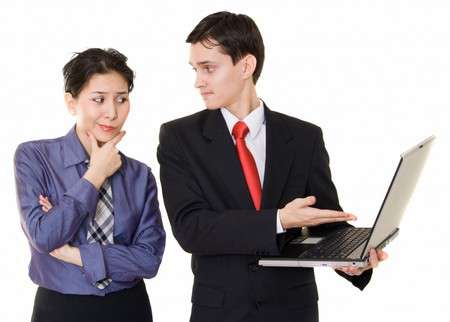
What Makes Your Link Valuable
Just having links to your page is not enough. You want the link to bring the best return possible. To do that, be sure these elements are a part of the link building process:
- Website Age – A link from an older website is more valuable than one from a new website.
- Page Rank – The higher the page rank of a site that links with you the more significant the link. Check out the Google Toolbar for your browser to check on a site’s page rank (PR) score.
- Link Source – Links from .gov and .edu are more valuable that links from .net or .com; however, the links from .gov are difficult, though not impossible, to get.
- Anchor Text – Be sure your anchor text uses your site’s most competitive keywords and variations of them.
- Link Position – Links at the top of an article are better than those at the bottom.
- Relevance – This is a link from a site related to your own; a relevant link from a site with a lower PR is actually more valuable than one with a higher PR but of little relevance.
Does Your Link Pass Value?
If you want to check out your links values, then Gyutae Park of Winning the Web (Great site on Internet marketing) suggests the following:
- Create a link on the target location with anchor text and a unique modifier. Be sure that the word is a somewhat related keyword, but not found on your actual website. (e.g. Page Progressive + decorating)
- If after a time, if the page on your site that is linked with that particular term is being ranked for the term used, then the link is successful. Once it’s determined to be worthwhile, then change the anchor text on the link back to something more relevant if you can.
How to Tell if Your Link has been devalued by Google
Obviously, the goal of link building is to drive more traffic to your site so that your business will grow. So, with all the work you are doing to improve your business through link building, you want the work to be appreciated by search engines like Google. To see if your hard work is paying off, here are a few things you can do to see if it the links have been devalued rather than appreciated.
- Page rank is low; although Page Rank is not quite as important as it was once thought to be, if your site is ranked lower than expected, you want to check your site for problematic links such as obvious paid links or duplicate content on your site.
- Crawl rate. Thought by some to be the new PR, crawl rates indicate how often Google reads (or indexes) your sites. This can be checked by checking the Cache Rate link next to the search listing. If it is more than a month old, it’s assign that the page is not indexed very often.
- Location of the link makes a difference. Google prefers links in the body of page rather than the sidebar or footer.
Link building is one of the most valuable tools in your website’s Internet Marketing tool bag. Make sure that you are using the right tools for the job you want to accomplish. If you are not certain about doing the task on your own, Page Progressive will be glad to help. You can contact us from our website or via Facebook or Twitter. We would love to hear from you!



 Do you remember the Aesop’s fable about the turtle and the hare? Remember how the turtle steadily plodded toward the finish line, while the hare raced along looking for easiest ways to get ahead, and then rested on his laurels once he thought he had attained the prize? Then, seemingly out of nowhere, there was the turtle at the finish line. This story reminds me of how some choose to approach
Do you remember the Aesop’s fable about the turtle and the hare? Remember how the turtle steadily plodded toward the finish line, while the hare raced along looking for easiest ways to get ahead, and then rested on his laurels once he thought he had attained the prize? Then, seemingly out of nowhere, there was the turtle at the finish line. This story reminds me of how some choose to approach


 The world of technology is constantly changing. In fact, by the time you finish reading through this, chances are something new has been developed or released. However, here are some of the more recent advancements in technology, development and communication that you, as a business owner, might care about.
The world of technology is constantly changing. In fact, by the time you finish reading through this, chances are something new has been developed or released. However, here are some of the more recent advancements in technology, development and communication that you, as a business owner, might care about.

 There are a variety of steps you can take to keep a website, whether
There are a variety of steps you can take to keep a website, whether